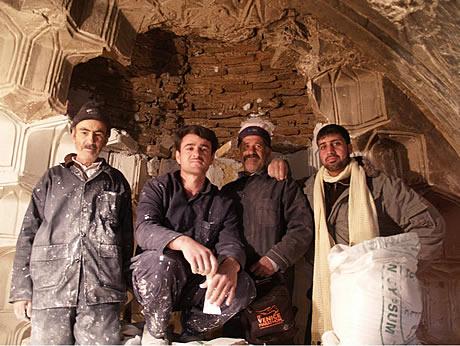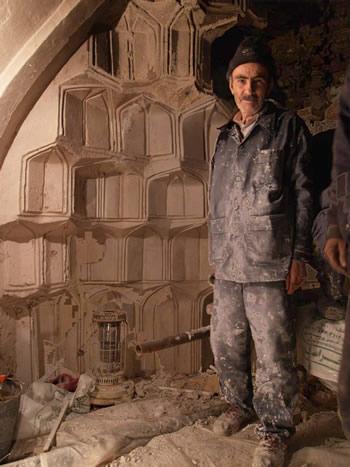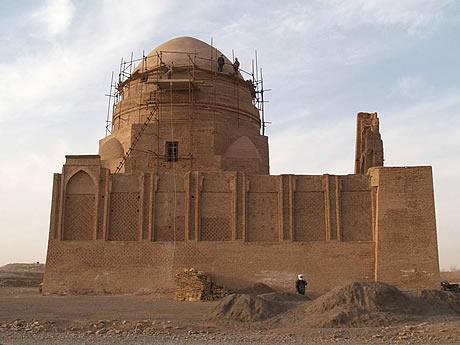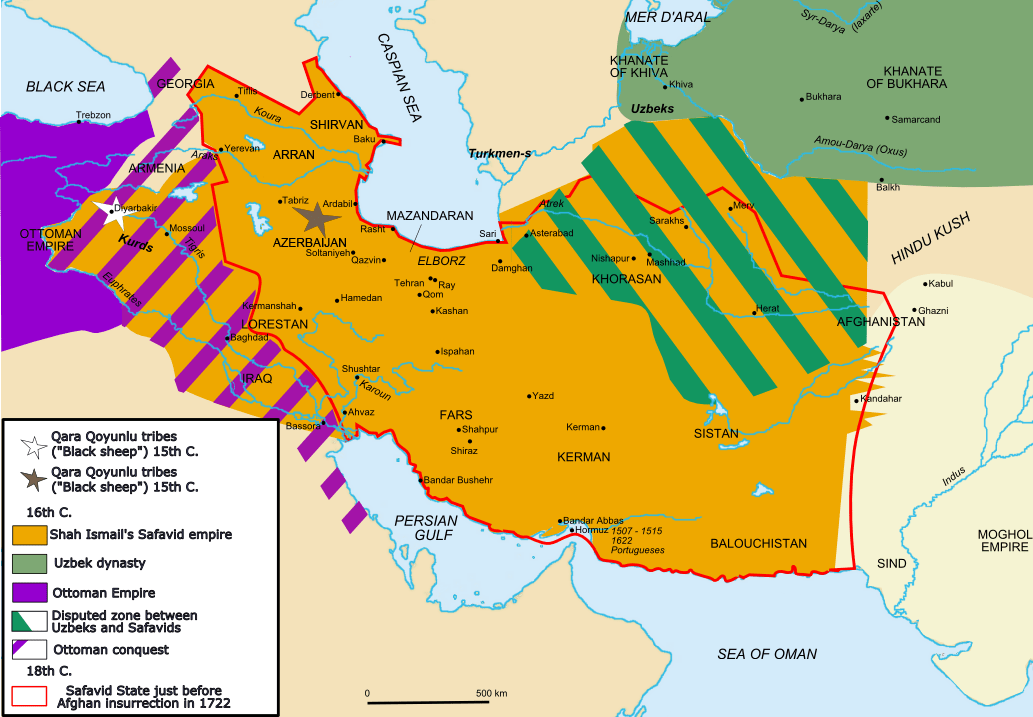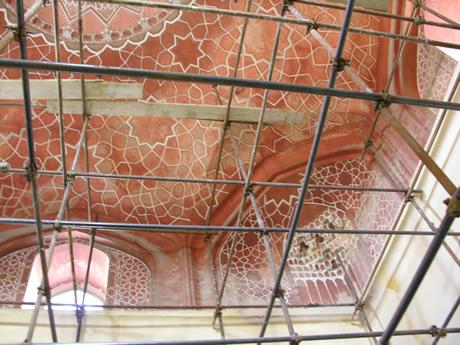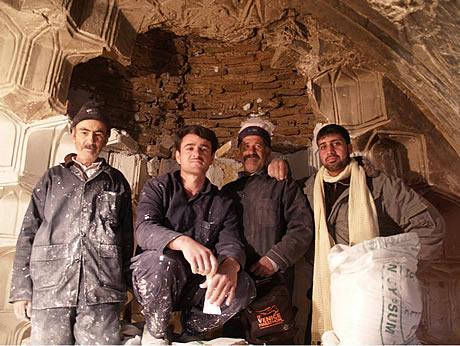Muqarnas
Here is the whole team responsible for restoring themuqarnas (behind them). The ustad (master craftsman, at left) told me that, unusually, he expected the two younger apprentices to continue working with him – more often now, young men do not stick to low paid and arduous craft jobs. [C.M.4]
